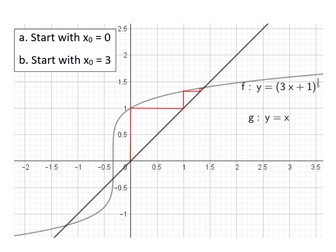Learning to solve quadratics by factorisation
<p>This is a slightly informal way of learning to solve quadratics by factorisation.<br />
My class had already learnt to factorise in previous lessons and we followed this up with these activities.<br />
Included are a starter and a main worksheet both WITH ANSWERS.<br />
Designed such that students learn to solve by substitution and do so largely by themselves.<br />
The starter should be followed by a discussion of why the last few substitutions give zero, followed by some board questions which are asked verbally (factorised quadratics equal to zero).</p>
<p>Then the main sheet can be started.</p>








